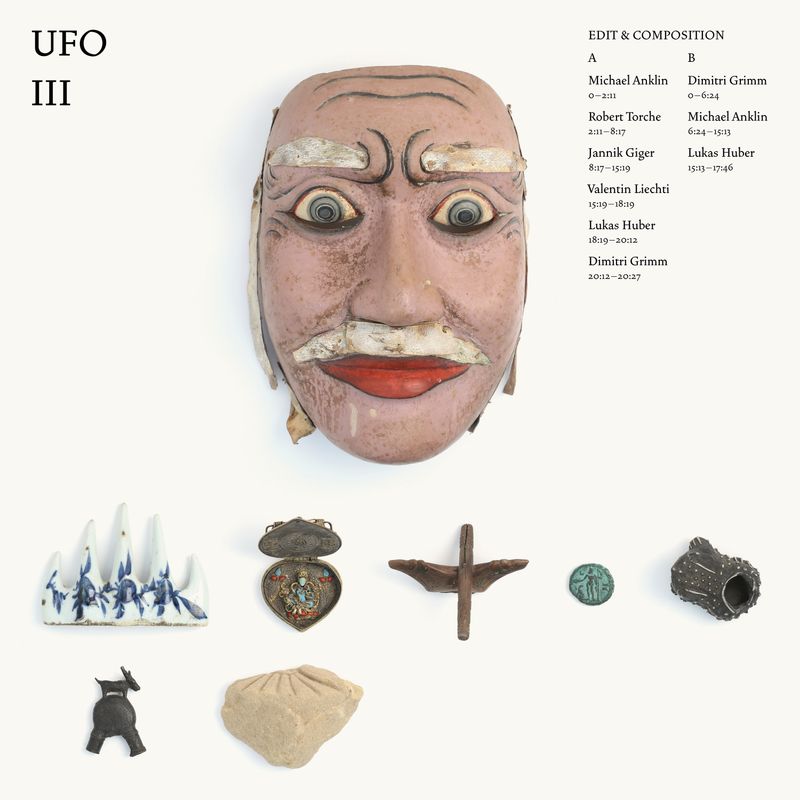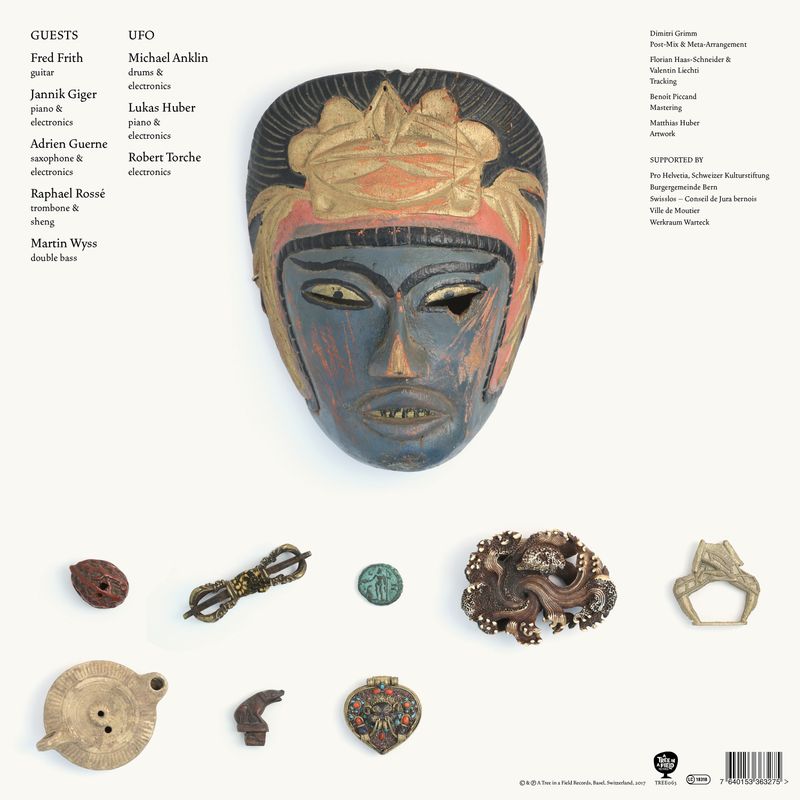

III
ft. Jannik Giger, Valentin Liechti, Dimitri Grimm, Fred Frith, Adrien Guerne, Raphael Rossé, Martin Wyss
1 Michael Anklin
2 Robert Torche
3 Jannik Giger
4 Valentin Liechti
5 Lukas Huber
6 Dimitri Grimm
7 Dimitri Grimm
8 Michael Anklin
9 Lukas Huber
Dimitri Grimm: Post-Mix & Meta-Arrangement
Florian Haas-Schneider, Valentin Liechti: Tracking
Benoît Piccand: Mastering
Matthias Huber: Artwork
Andreas Muster: Lithography
Supported by:
Pro Helvetia
Burgergemeinde Bern
Swisslos/Conseil de Jura bernois
Werkraum Warteck
Ville de Moutier
The second UFO album – which, to keep the chronological sequence going, is called III – was released on A Tree in a Field Records in the winter of 2017. On III, UFO raises various questions including whether expression can still actually be captured within the context of primarily digitally produced music. A similar question was asked in the 1960s, for example by The Beatles or the pianist Glenn Gould, although at that time one probably assumed the obvious recognition of a link between performance and documentation. Today, the question has changed to: Is the gap between the two already so big that the performance's disjunction from its documentation, rather than its connection to it, is more obvious and thus always needs to be viewed as a starting point?
UFO based III around free improvisation, which takes an extreme approach to performance: Going back to the previous question, how can free improvisation be captured on audio recordings if there is no contact between it and the performance? A strategy adopted by the band was to set the expression of the performance as an incentive rather than an end product: The free improvisation sessions upon which the album is sculpted were recorded and cut to vinyl with the aid of several – distinctive – working steps: The individual sessions were handed to various artists who (in turn) were given free hand to work with the material. The resulting mixes / edits / pieces were then brought together by a meta-instance – electronic music producer Dimitri Grimm.
Whether any of the spontaneity / expression of the original sessions remains – and the contact between performance and documentation still exists – can and should be determined by listening to the album.